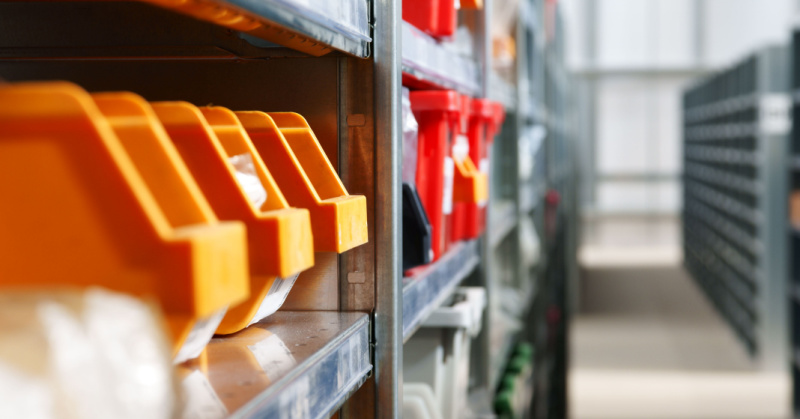Inventory accounting for manufacturing businesses is complex. There are many moving parts, and each requires accuracy and attention to detail to ensure the financial state of the business trends in the right direction.
In a previous article, we took a deep dive into the basics of accounting for manufacturing businesses by covering topics like:
- Manufacturing overhead aka indirect costs
- Production costing methods
- Inventory Valuation
- What you should look for in accounting software
However, because of the intricacies of inventory accounting for manufacturing businesses, we decided it’d be best to go into detail about some of the key areas you will face.
In this article, we will walk you through inventory management at each level, including:
- Raw materials
- Work-in-progress (WIP)
- Finished goods
Let’s get started!
3 Key Areas of Accounting for Manufacturing Inventory
1. Raw Materials
Raw materials play a significant role in inventory accounting for manufacturing businesses, and there are various things to keep in mind that are specific to managing accounting for raw materials.
ValuationRaw materials are typically valued at cost, which includes the purchase price, transportation costs, and any additional costs incurred to bring the materials to its finished product.
Accurately recording the cost of raw materials and maintaining consistent valuation methods is essential for making informed financial decisions.
Just-in-Time (JIT) Inventory
Some manufacturing businesses adopt the JIT inventory management approach, where raw materials are used in production immediately after they’ve been received. This keeps the need for excess inventory low.
While low amounts of excess inventory is typically a good thing, JIT inventory requires plenty of strategy involving:
- Precise coordination with suppliers
- Accurate demand forecasting
- Efficient production processes to avoid disruptions
Keep in mind this is just one inventory costing method. Other options include:
- The Retail Inventory Method
- The Specific Identification Method
- The First In, First Out (FIFO) Method
- The Last In, First Out (LIFO) Method
- The Weighted Average Method
The role of an accountant is to help the business owner choose the most efficient method for their company.
Inventory Turnover and Carrying Costs
Raw material inventory turnover is a critical metric measuring how quickly raw materials are used in the production process.
A high turnover rate means you are using the raw materials efficiently, while low turnover may mean there is excess inventory or that some of the inventory is obsolete.
Manufacturing businesses need to analyze inventory turnover rates and consider the associated carrying costs, like storage, insurance, and potential obsolescence, to optimize their inventory levels.
2. Work-In-Progress (WIP)
Manufacturing processes involve middle stages where products are partially completed, called work-in-progress (WIP) inventory. Measuring this is essential for calculating the cost of goods sold and accurately reporting the business’s financial position.
Valuation
Valuing WIP inventory is estimating the value of partially completed goods. This requires determining the cost of raw materials, direct labor, and overhead costs incurred up to the specific stage of completion. There are plenty of costing methods that can be used to measure WIP including, standard costing or job costing.
Percentage of Completion
The percentage of completion is a critical aspect in WIP accounting. It estimates the level of production that each WIP item has progressed toward completion. This estimation can be based on:
- Physical inspection
- Time spent
- The proportion of total expected costs incurred
Cost Accumulation
WIP inventory captures the costs incurred until goods are fully completed and marked as finished goods inventory. Accuracy in these areas is crucial for calculating the cost of goods sold (COGS) and determining the profitability of the manufacturing process.
Financial Reporting
WIP inventory is reported on the balance sheet as an asset and is recorded separately from finished goods and raw materials inventory. WIP costs are transferred to finished goods when the production is completed, and the value of the finished goods is determined based on the accumulated costs.
3. Finished Goods
Once the finished goods are complete, there is still plenty of accounting work to do. Getting this work done correctly is crucial for manufacturing businesses to:
- Meet customer demand
- Control costs
- Maintain profitability
Valuation
Finished goods are typically valued at their cost of production, which includes:
- Direct materials
- Direct labor
- Manufacturing overhead
The valuation should reflect the total cost associated with transforming the raw materials into finished goods. Consistency in this area is crucial for accurate financial reporting.
Cost of Goods Sold (COGS)
COGS is the cost used to produce the finished goods. It includes the cost of direct materials, direct labor, and manufacturing overhead directly attributable to the production process. By calculating this, you can determine the profitability of the business.
Inventory Turnover
Measuring the inventory turnover rate for finished goods will help you understand the efficiency of your inventory management.
A high turnover rate means finished goods are being sold quickly, while a low turnover rate can mean excess inventory or slow sales. With this metric, you can:
- Optimize production schedules
- Minimize carrying costs
- Avoid obsolescence
Master Inventory Accounting for Manufacturing Businesses
The complexities of inventory accounting for manufacturing businesses may take some time to understand. However, each area is key to a financially successful business.
The good news is that there are plenty of tools and resources available to make manufacturing accounting an easier process. The key is to make it a priority.
.png?width=150&height=63&name=TWRlogo-regmark_blueblack%20(1).png)
.png)










Do you have questions about this article? Email us and let us know > info@woodard.com
Comments: